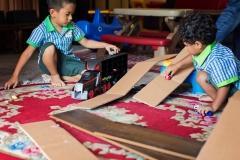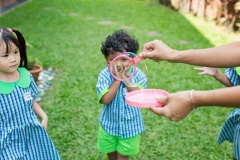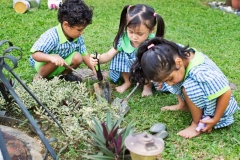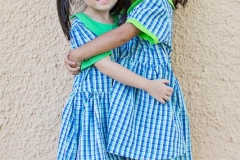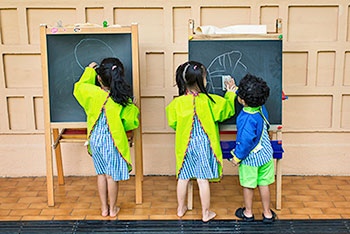
Pariposa’s Emergent Curriculum
The curriculum at Pariposa Preschool is based on an emergent curriculum framework. Wikipedia describes emergent curriculum as a way of planning curriculum based on the student’s interest and passions as well as the teacher’s. To plan an emergent curriculum requires observation, documentation, creative brainstorming, flexibility and patience. Rather than starting with a lesson plan, which requires a “hook” to get the children interested, emergent curriculum starts with the children’s interests.
Our curriculum recognises the benefits of providing a learning environment that promotes continuous positive development of social, cognitive, emotional, physical, and creative strengths. The learning environment provides ample opportunity to explore values, broaden communication skills, collaborate and engage in group problem solving experiences make personal choices, develop and represent ideas and theories.
PARIPOSA’S EMERGENT CURICULUM INCLUDES ENVIRONMENT SUITABLE FOR:
- A variety of play levels
- Indoor and outdoor activity
- Quiet play as well as active play
- Group play and opportunities to be alone
- Routines, transitions, and schedules where free play provides time and space for children’s choices
PARIPOSA’S EMERGENT CURICULUM BALANCES:
- Spontaneity with planning.
- Individuals needs and group needs.
- Fun and learning.
- Flexibility with goal-directed planning.
- And adults who take responsibility while avoiding a teacher-dominated curriculum.
WHAT YOU MAY OBSERVE IN THE CLASSROOMS:
- Teachers observing children at work and play and recording what they see.
- The teachers charting during brainstorming sessions with the children to record their interests and development.
- Activities continue to be PROCESS-ORIENTED AND PRODUCTS WILL NOT USUALLY GO HOME (no need to assign your child to “do a painting” to bring home)
- Teachers documenting and displaying the learning process as it occurs and evolves day by day.
- Teachers and/or parents photograph activities when possible, and identify learning processes so that we are all aware of what is developing in the classroom.
- The children experience the process of acting upon and learning from their environment and interactions as they observe, experiment, and contribute to life in the classroom.
- Rather than seeing program-planning ideas listed at the beginning of the week or month, we see the development of the curriculum appear and expand day by day.
- Teachers understand how and what children learn and how to recognize moments when they can support children by asking a thought-provoking question, providing a tool, sharing a story, helping seek an answer.
GOALS OF EMERGENT CURRICULUM
- To inspire delight, curiosity, celebration, and inquiry in the classroom.
- To build intrinsic motivation and a long-term love for learning in children.
- To help children craft an internal compass to guide them as a learner, rather than relying on instruction and direction from others.
- To inspire children to be authors, inventors, illustrators, designers, dancers, singers, actors, etc. and to celebrate their unique talents and abilities.
- To maintain a program that is focused on the fundamentals of how and what children learn, so it can support and guide learning as it emerges naturally inside the Centre, in the natural world, and in our community as a whole.
- To allow the natural pace of individual and group learning to emerge, and not be guided exclusively by the clock or calendar.
- To help children develop cooperation, partnerships, resource-sharing, decision making, and problem-solving skills.
- To encourage consistent self-reflection and professional growth among teachers, so they may always improve the quality of classroom experience.
- To give children an organized environment in which to use all of their senses and faculties to learn.
- To recognize that critical learning takes place during conflict, negotiation, brainstorming and resolution.
- To provide adequate outside time daily.
- To support the varied learning styles (visual, auditory, sensory, verbal, etc.) in ways that are also aware of gender differences.
- To carry out assessment in the form of student portfolios and documentation of learning.
- To honor and welcome children with special needs into our school community.
- To practice supportive social learning rather than punishment.
LEARNING FEATURES
We offer a program of learning that supports young children to:
- Build in-depth knowledge
- Become critical thinkers
- Develop positive and affirmative relationships within the school community.
- Construct understandings through sharing experiences and knowledge.
- Develop the confidence to acquire and nourish a lifelong love of and predisposition to learning
- Develop a belief in oneself that leads to respect, responsibility, cooperation and leadership
- Learn through a curriculum which is dynamic and balanced in literacy, numeracy, science and social competency.
- Our classrooms are filled with music, art, theatre, literature and diverse cultures.

